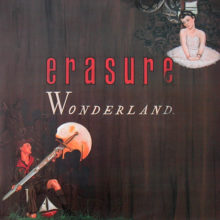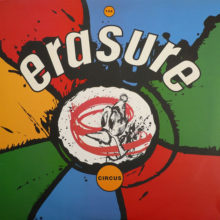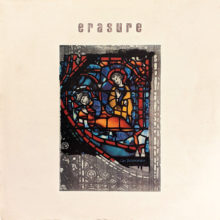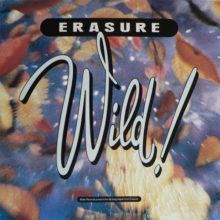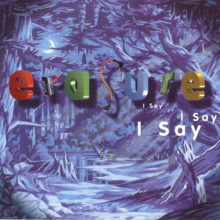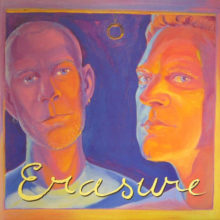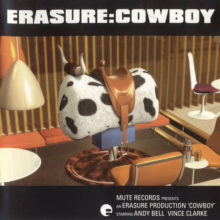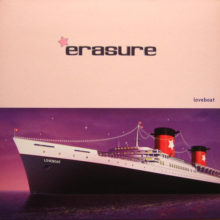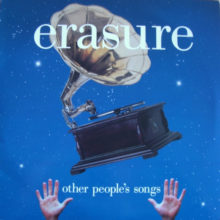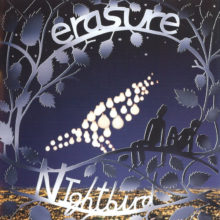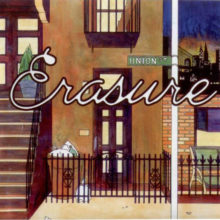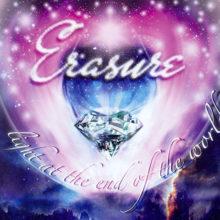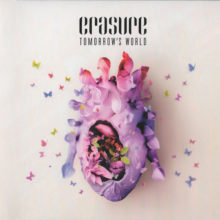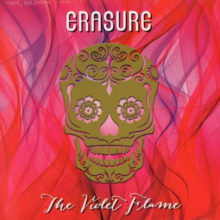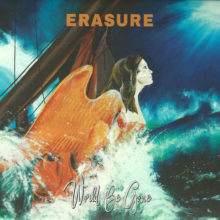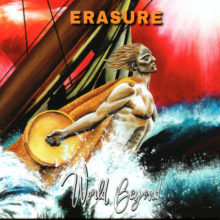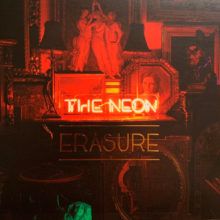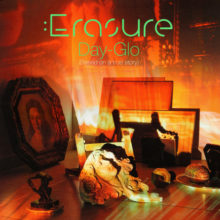Hugo Fernbom’s Erasure page
Erasure was formed by Vince Clarke and Andy Bell in 1985.
Vince Clarke played in Depeche Mode until the autumn of 1981. He wrote almost all of their songs, but he didn’t feel comfortable anymore. He soon formed the duo Yazoo (called Yaz in North America) with Alison Moyet. They released four hit singles and two albums before they split in 1983. After that Vince Clarke formed The Assembly with the producer Eric Radcliffe. They released one single, “Never Never” autumn 1983, with Feargal Sharkey as singer. In the spring of 1985 Vince Clarke released a single with Paul Quinn. Before this he had advertised for a singer. Many singers were tested, but Vince Clarke didn’t like anyone until the last one, and that was Andy Bell. Andy Bell’s voice resembled a bit to Alison Moyet’s. He has said that this is because he had listened very much to Yazoo’s songs.
They formed Erasure and in September 1985 they released the single “Who Needs Love (Like That)”. It didn’t become a hit in England and neither did their second single “Heavenly Action”, but their third single “Oh L’amour” in 1986 became a hit for example in Sweden. After that they released their first album “Wonderland”. On this album Vince Clarke wrote three songs and Andy Bell wrote one song. The rest of the songs they had written together. Since then they have written all of their songs together.
In England it wasn’t until their next single “Sometimes” they had their breakthrough. It was from their second album “The Circus”, which included three more hit singles. Their third album “The Innocents” become No. 1 on the British album chart. And so did their fourth album “Wild!” in 1989.
On their fifth album “Chorus” in 1991 they sound a bit like it did in the early 1980s with more “blip blop” sounding synthesizers. In 1992 Erasure recorded four ABBA-covers on the EP “ABBA Esque”. This EP was Erasure’s first No. 1 single in England. It annoyed Vince Clarke that he had to play someone else’s songs to become No. 1. This year they also released the collection “Pop! The Twenty First Hits” and a new version of “Who Needs Love (fLike That)”.
Vince Clarke preferred analogue synthesizers. The things he likes about the analogue synthesizers is that he can create all the sounds he wants to, that it sounds artificial, and that it is quite hard to predict what it will sound like. He also disliked MIDI, which didn’t have the perfect timing, he said.
Vince Clarke was getting even more keen on analogue synthesizers, so he decided that only analogue synthesizers and Andy Bell’s voice were to be heard on their album “I Say I Say I Say” in 1994. Vince Clarke had to work to achieve this. He used only old synthesizers and most important of it all: he used an analogue sequencer. He programmed it himself and once you’ve played a song you can never play exactly that song again. His favourite synthesizer was Oberheim Xpander.
He used only analogue synthesizers also on the album “Erasure” in 1995. This album is quite special. It’s more than 70 minutes long. Vince Clarke really experiments with the synthesizers and there are long instrumental parts. He has said that he wanted to do a Pink Floyd type of album and that’s what he did with this album.
In October 1996 Mute re-released Yazoo’s four singles, as well as The Assembly’s single and the single with Paul Quinn, on CD.
In March 1997 Erasure released the album “Cowboy”. From that album they released the singles “In My Arms”, “Don’t Say Your Love Is Killing Me” and “Rain”.
In September 1999 Vince Clarke released an album with Martyn Ware called “Pretentious”. In December 1999 two CD single box sets with Erasure’s ten first singles were released.
In October 2000 Erasure released the album “Loveboat” and the single “Freedom”. In December 2001 they released the single “Moon & The Sky”.
In January 2003 Erasure released the album “Other People’s Songs” and the single “Solsbury Hill”. In April 2003 they released the single “Make Me Smile (Come Up And See Me)”.
In October 2003 Erasure released the collection “Hits! The Very Best Of” and a new version of “Oh L’amour”.
In January 2005 Erasure released the single “Breathe” and the album “Nightbird”. In March 2005 they released the single “Don’t Say You Love Me”. In June 2005 they released the single “Here I Go Impossible Again/All This Time Still Falling Out Of Love”.
In October 2005 Andy Bell released his first solo album “Electric Blue”.
In April 2006 Erasure released the acoustic album “Union Street”. In March 2006 the single “Boy” was released.
In April 2007 Erasure released the single “I Could Fall In Love With You” and in May the album “Light At The End Of The World”. In July 2007 the single “Sunday Girl” was released.
In May 2008 Yazoo released a 4 disc box called “In Your Room” and had a tour.
In February 2009 Erasure released the collection “Total Pop! The First 40 Hits” and a new version of “Always”.
In June 2010 Andy Bell released his second solo album “Non-Stop”.
In September 2010 Yazoo released the live album “Reconnected Live”.
In October 2011 Erasure released the album “Tomorrow’s World”.
In March 2012 VCMG (Vince Clarke and Martin Gore) released the techno album “Ssss”.
In November 2013 Erasure released the Christmas album “Snow Globe” and in September 2014 the album “The Violet Flame”.
In October 2015 Erasure released the collection “Always – The Very Best of Erasure” and a new version of “Sometimes”.
In December 2016 Erasure released the 13 disc box “From Moscow To Mars”.
In May 2017 Erasure released the album “World Be Gone”. In March 2018 they released “World Beyond”.
In August 2020 Erasure released the album “The Neon”. In June 2022 released “Day-Glo (Based On A True Story)”.
